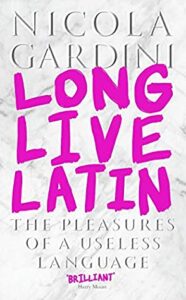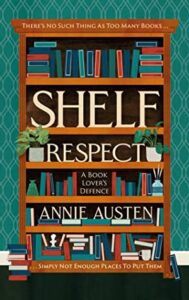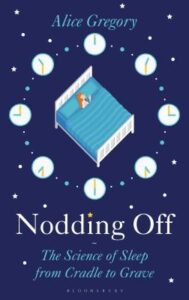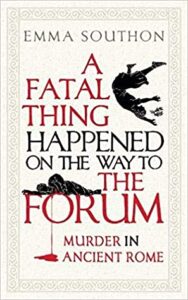Posted June 15, 2021 by Nicky in Reviews / 2 Comments
 White Bread, Aaron Bobrow-Strain
White Bread, Aaron Bobrow-Strain
I wasn’t sure how interesting a book on store-bought white bread could be, but someone recommended it to me and I wanted to give it a chance… and it was everything I could want from the kind of book which takes an everyday part of life and digs into its history and social meaning. Bobrow-Strain lays bare all kinds of things about the US which you wouldn’t necessarily link to white bread. Or maybe, knowing the US you would — wealth, health, religion, race.
It ended up being really fascinating: rather densely written — for 200 pages, it took me a while — but in a good way, informative and considerate. Unlike another recent book on food I read, Reinventing the Wheel, it managed not to sound like it was judging everyone in the world’s bad food choices for causing problems. Instead it really dug into why white bread seemed (and seems) so desirable, and what powerful motivations lie behind the choice.
I’d really love to know more about this whole subject as relates to the UK as well, and I’m eager to explore the references for more books on food, since I’ve been finding them fascinating lately.
Rating: 5/5
Tags: Aaron Bobrow-Strain, book reviews, books, history, non-fiction
Posted June 11, 2021 by Nicky in Reviews / 0 Comments
 Long Live Latin, Nicola Gardini
Long Live Latin, Nicola Gardini
This… turned out to be really not my thing. It’s a passionate defence of Latin as something you should learn just for its own sake, for the beauty and versatility of the language — not because it serves some other purpose, like preparing you for other languages or limbering up your brain or something like that. I don’t disagree with the argument at all; I’d love to learn Latin… but this isn’t the book to convince you. I think this is a book you can enjoy best when you understand a little Latin, and can better appreciate the many, many, many examples of Latin texts that the author draws in to help make his points.
For someone who doesn’t already know any Latin, though, it’s difficult to appreciate the elegance of phrasing, especially when twice-translated (since this book is originally written in Italian, I think? it’s definitely in translation, anyway). Sometimes there would be an interesting insight or two into the writers and texts described and given as exemplars, but there’s just too much “here’s a quotation and here’s why it’s great”.
Rating: 1/5
Tags: book reviews, books, Nicola Gardini, non-fiction
Posted June 7, 2021 by Nicky in Reviews / 0 Comments
 Word by Word, Kory Stamper
Word by Word, Kory Stamper
Ahhh, I really loved this book. Kory Stamper works for Merriam-Webster, the dictionary, and her work has been focused on words. Reading to find context and new usage for words, obsessively logging new usages she sees in the wild, and painstakingly combing through proofs to prepare new editions of the dictionary. She manages to make it sound fascinating, sometimes while breaking down some processes which are probably even more tedious in reality than they sound in her account, and throughout she has a sense of humour and a real enthusiasm for her work and what it means to people that made reading about it very enjoyable.
It’s the kind of book where I found myself reading bits out to my wife, just to share the sheer glee about some of the anecdotes mentioned… like how they figure out whether a verb is transitive (does it fit if you lay over a piece of paper saying “I’mma _____ your ass”, with the ____ being a blank space for the word you’re trying to parse?).
I loved it. Kory Stamper seems pretty great.
Rating: 4/5
Tags: book reviews, books, Kory Stamper, non-fiction
Posted April 4, 2021 by Nicky in Reviews / 0 Comments
 Science Fictions: Exposing Fraud, Bias, Negligence and Hype in Science, Stuart Ritchie
Science Fictions: Exposing Fraud, Bias, Negligence and Hype in Science, Stuart Ritchie
I’ve been meaning to read this for a while, and happened to pick it up this week — just a week after doing a course on pharmacoepidemiology in the age of COVID, which involved a lot of discussion of how to evaluate papers, and responsible study design. I’m also studying biostatistics and epidemiology this year, of course, meaning that I understand more about statistics than I care to — which means, all in all, that this book slotted in admirably, though quite without meaning it.
The issue the book discusses is a serious one: through the current system of “publish or perish” and the way grants are awarded, tenure is granted, etc, poor science is becoming the way to do things. It’s more important to produce a positive result than to produce a correct one, and even good scientists are lead astray by the rush to publish impressive results from underpowered studies with small sample sizes and implausibly large effects. There are a fair number of innocent mistakes being made, along with the fraud, bias and hype, but it all adds up to a bit of a crisis. As students we’re taught all about how to recognise faulty studies and how to build good ones — but the scientific world we enter into, if we choose research, doesn’t build on those foundations.
The book is surprisingly readable, and I would recommend it to both laypeople and scientists. It offers some very good analyses of what can go wrong, and some suggestions for how we can fix that, move on, and create a better, more open scientific community. It’s possible that if you’re a scientist you’ll wince and recognise that you yourself fell prey to this — the temptation to report positive results and shelve the negative ones, perhaps — but the point isn’t that one should always have been perfect, just that we all have to hold our hands up and work to make things better.
Plus, for a layperson, you’ll gain a better understanding of when to be sceptical, and what the warning signs are.
Rating: 5/5
Tags: book reviews, books, non-fiction, science, Stuart Ritchie
Posted April 2, 2021 by Nicky in Reviews / 0 Comments
 Shelf Respect, Annie Austen
Shelf Respect, Annie Austen
Shelf Respect is a nicely presented little book which is more of a stocking filler for the bibliophile in your life who you don’t know very well than an in-depth read about how to curate your bookshelves. In the end, it amounts to a collection of observations, lists and quotes about reading. There’s a weird tendency to believe that people who love books are morally superior, and parts of this book indulge jokingly in that. All a bit hyperbolic and for a particular sort of reader for whom “being a reader” is an identity, a part of being “not like the other girls” or “the clever one” or whatever.
That last part is something that I’ve struggled with, lately. I do think of myself as “a reader” as fundamentally as I consider myself a person, and I’m not sure it serves me well. At the very least it’s important to note that many amazing people do not read, and that doesn’t make them less intelligent or more morally suspect than the next person — and we’re saying something pretty horrible about ourselves as readers when we make those assumptions
It’s fairly fluffy and benign, as a book, but that undercurrent bugs me.
Rating: 2/5
Tags: Annie Austen, book reviews, books, non-fiction
Posted March 29, 2021 by Nicky in Reviews / 1 Comment
 Kindred: Neanderthal Life, Love, Death and Art, Rebecca Wragg Sykes
Kindred: Neanderthal Life, Love, Death and Art, Rebecca Wragg Sykes
That’s a pretty big title, particularly as it includes concepts that people doubt applied to Neanderthals (like love and art). Nonetheless, Wragg Sykes lives up to it, painting a picture of the current state of the art in understanding Neanderthals, their lives, their relationships to each other… and their relationships to us. I lost count of the number of times I just had to share a snippet or an image from this book with my wife, because it’s just so cool what we can know about these people, from the way they ate to their technology level.
One example: their technology level, since we’re speaking of that, was higher than you’d think — for example, they were creating a sort of glue from resin. Pine resin was the best, but other resin when mixed with beeswax gained similar properties, and they knew that and used it! There are multiple levels of technology there, from getting the resin out of the bark (which required a low-oxygen fire) to mixing it to applying it to attaching spearheads to hafts, etc.
I knew some of the things mentioned in this book, of course, particularly when it comes to how Neanderthals are related to us. But much of it was new, or more detailed than I thought, and Wragg Sykes’ interpretation of the evidence is fascinating. Even if you don’t go all the way with her in attributing complex thought and planning to Neanderthals (though I think the evidence tends in her direction), the evidence is astounding enough to keep your attention.
This is actually that rarest of things: a popular science book which I will keep, even though I probably won’t read it again, because I enjoyed it so much and I would like to have it to hand to refer to in the future.
Rating: 5/5
Tags: book reviews, books, history, non-fiction, Rebecca Wragg Sykes, science
Posted March 21, 2021 by Nicky in Reviews / 0 Comments
 The Restaurant: A History of Eating Out, William Sitwell
The Restaurant: A History of Eating Out, William Sitwell
Perhaps unsurprisingly, this survey of eating out through the ages covers Britain most heavily, especially toward the end of the book. Which somewhat makes sense as a strategy, given the scope of the theme “eating out”, but the subtitle doesn’t really make that clear. In the end, I don’t know a lot about food, so I can’t say much about the accuracy of the actual information, but Sitwell writes clearly (if not always with sparkling prose) and introduces the important points well, developing his theme about the fact that British food isn’t really that bad after all, and that we have our own food-wizards.
Like I said, though, it’s not always sparkling prose, and I did drift off a bit. It’s actually a nice source for a story I want to write, so it served its purpose, but… to put it another way, it’s not the kind of non-fiction where I turned to my wife to ask “did you know? did you know?” — nor the kind of non-fiction I read compulsively, eagerly, regardless of the topic. (And there are certainly books that fascinate me about topics that don’t; Richard Fortey can make me enthused about geology, for goodness’ sake.)
So, interesting, but not special, I guess would be my summary.
Rating: 3/5
Tags: book reviews, books, history, non-fiction, William Sitwell
Posted February 28, 2021 by Nicky in Reviews / 0 Comments
 Nodding Off: The Science of Sleep, Alice Gregory
Nodding Off: The Science of Sleep, Alice Gregory
This book is about the importance of sleep: the functions it fulfils for us, how that changes throughout our life cycles, and the consequences of not getting enough. It has a wealth of citations, and most of it was unsurprising to me, suggesting it’s a reasonable synthesis of the current state of our knowledge.
However, and this is a really big but, I lost count of how many times Gregory proclaims something and then admits in the next sentence or a footnote that it was a ‘small study’ and hadn’t been replicated in other studies, especially when she says it hasn’t been replicated in larger studies. The fact that she made it sound like these things were facts, when actually it was that shaky, gave me pause about more or less everything she said.
You can’t make big claims from small, underpowered studies. That’s just not how it works. They can be a testing ground, a starting point, but there’s no way you should be presenting them as fact in a pop-science book where people might actually think these are tried and tested facts, even if you explain the study is small. People just don’t grasp the significance of that (or rather, the fact that it’s probably not significant!).
I’ve also definitely had more engaging pop-science reads lately; Sue Armstrong comes to mind. Sleep can be a fascinating topic, but I found myself nodding off over Nodding Off.
Rating: 2/5
Tags: Alice Gregory, book reviews, books, non-fiction, science
Posted February 28, 2021 by Nicky in Reviews / 0 Comments
 The Pocket: A Hidden History of Women’s Lives, Barbara Burman, Ariane Fennetaux
The Pocket: A Hidden History of Women’s Lives, Barbara Burman, Ariane Fennetaux
Focusing on 1660 to 1900 (a very precise time range!), this book uses the tie-on pocket as an ‘in’ to dig into women’s lives via the historical records, including the physical records (pockets which have ended up in collections and museums), writing and court records. It’s a fairly academic book — lots of “meaning resides in the blahblahblah” type language — and also serves as a pretty comprehensive repository for photographs of extant pockets and their details, but it’s accessible enough if you have enough of an interest, and there’s a lot of fascinating detail.
What really surprised me was how long the tie-on pocket lasted, and the wealth of evidence the authors were actually able to show about how they were used, made, obtained, bought, bartered, pawned and gifted. They really do make a good entrée for the history of women’s lives; I thought one of the most interesting parts were the court records, giving us a glimpse into what women carried in their pockets and why.
Not the most riveting read, even for non-fiction, but the photographs are beautifully done and in full colour, and the subject is fascinating enough that I found it well worth the slightly dry and academic approach.
Rating: 3/5
Tags: book reviews, books, history, non-fiction
Posted February 28, 2021 by Nicky in Reviews / 0 Comments
 A Fatal Thing Happened on the Way to the Forum, Emma Southon
A Fatal Thing Happened on the Way to the Forum, Emma Southon
I worried from the title and first few pages that this might prove too flippant and shallow from me, but I was wrong to worry. I quickly settled into it, and it’s obvious that Southon knows her stuff, takes deep joy in it, and knows where she can skimp on explanations a bit in order to get to the meat of things. She gives a lot of context without getting too bogged down in it, while telegraphing that the point is coming; if you really hate comments like “bear with me, we’re getting to the good stuff”, then it won’t work for you… but mostly, I thought she did a really good job.
The idea of a book about murder in Rome gave me a bit of pause, since I didn’t think they really had such a concept… and indeed, I was right, and Southon acknowledges that it’s a very modern way to interrogate these sources, and that in many of the cases described, no one batted an eyelid (the murder of slaves, particularly). As she says, though, the deaths and the attitudes to those deaths still tell us a lot about Roman society and the place of various people within it.
I was intrigued by the topic, but didn’t expect to find it a pageturner; that it was says something about how engaging Southon’s writing was. I found it deeply enjoyable — particularly as it was one of those books that had me turning to my wife to delightedly ask ‘did you know?’ and read bits out or wave my hands excitedly as I connected up bits and shared the fun.
Rating: 5/5
Tags: book reviews, books, Emma Southon, history, non-fiction
 White Bread, Aaron Bobrow-Strain
White Bread, Aaron Bobrow-Strain








